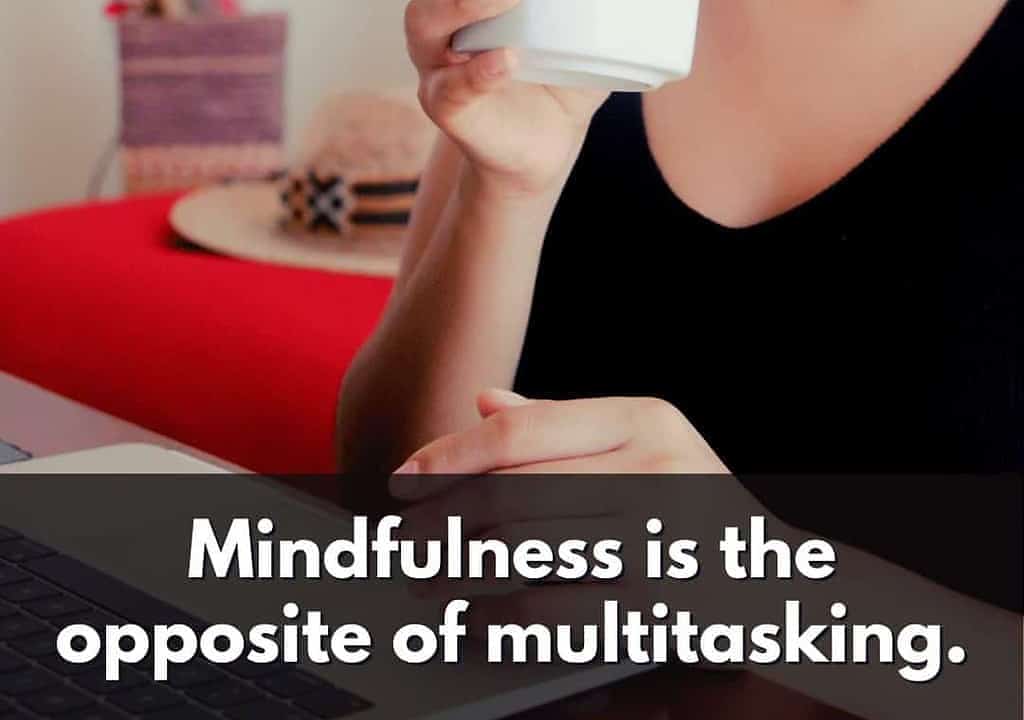Why do you carry out six unimportant items but forget the Parmesan cheese you went shopping for? Where was your mind while you were in the supermarket?
We’ve all experienced mind-wandering at some point in our lives. Here are two startling scientific facts about it:
- Our minds wander off 2,000 times over a 16-hour waking day.
- Our brains spend almost 50% of our waking hours wandering.
What Is Mind-Wandering?
Mind-wandering means having self-generated thoughts unrelated to the present task or surroundings. It is a state of daydreaming, absent-mindedness, auto-pilot, or mindlessness.
Typically, the thoughts that make our minds wander off are unconnected with the task or the situation we are in. This indicates we are doing one thing while our minds are somewhere else. Our wandering minds travel to the parts of our brains where our unresolved problems reside.
When the mind wanders, one withdraws attention from their immediate environment and turns it inward to a stream of thoughts related to their current concerns (Klinger, 1999). There is often a loss of perceptual contact with the outer world, called perceptual decoupling, and no awareness of the current focus of one’s attention, called loss of meta-awareness (Schooler et al., 2011).
We slip into our set patterns of habit during a normal day, like driving on an empty road without paying too much attention to our driving. Our minds wander during such times because we do not need to be fully present while doing those acts.
Sadness is a forerunner of excessive mind-wandering. Research by Poerio and others found mind-wandering is more frequent when someone is sad.
We found that sadness was a significant precursor of mind-wandering … Our results contradict Killingsworth and Gilbert’s (2010) contention that unhappiness is the consequence of mind-wandering.
— Poerio, Totterdell, Miles, 2013
Psychologists have found a whole slew of benefits of your mind-wandering. Let’s discover the three most life-changing ones you probably weren’t aware of.

3 Life-Changing Benefits of Mind-Wandering
Psychologists have discovered several helpful merits of mind-wandering. Here are the three most striking ones:
1. Judgments Made While Mind Wandering Are Fast And Correct
Research shows we are unbelievably fast in making explicit judgments about others. They suggest we do that from our unconscious level and do it quite well.
• Twenty-six percent higher tips
A study by the maverick social scientist Rick van Baaren from the Radboud University of Nijmegen found when restaurant servers repeated the orders of their customers word-for-word (The Parrot Effect), they received tips 26% more frequently.
The simple repeating of the order sent out a subtle cue they could trust the server as she was carefully listening to them. That mirroring behavior or social mimicry led the customer to assume they are being valued.
Now, the strange fact is, even when they were not fully conscious about it, they paid the favor back in tips.
The reason is we like people better when they mimic our moods and gestures subtly and spontaneously. In fact, wordless behavior mimicry with no conscious awareness may occur during 30 percent or more of any interaction.
Such imitation—of gestures, finger movements, facial expressions, etc.—plays a role in empathy, affiliation, and rapport.
— Chartrand and van Baaren, 2009
So, the trick to get people to like you is to mimic their actions, but not too much. If you consciously try to copy someone gesture-for-gesture, they see a red flag—and feel cold at your presence near them.
• Feeling the chills
In a study by the psychologists, a woman greeted the participants in a polite yet highly formal way. Sometime later, each participant received 10 photos. The woman came to each and asked what they saw in those photos, as she intentionally mimicked the participants.
And they felt the chills.
When asked what the room temperature might be, they said it was two-and-a-half times colder than when the same woman did not mimic them.
What happened there?
Social mimicry is a sign of intimacy, as we know. But when people perceive mimicry in situations where they are not expecting intimacy, as from a formal person, it raises a threat. This hesitancy comes from our deeply wired survival instinct borne out of thousands of years of evolution.
• Split-second kindness
In another study, the participants needed just one-tenth of a second to build first impressions about their target’s personality. Within that “thin slice” of time, only 100 milliseconds, they had judged whether their targets were trustworthy, open to new experiences, kind, careful, emotionally stable, or enthusiastic.
Now, the bigger “Wow!” part: the researcher psychologists Janine Willis and Alexander Todorov found these 0.1-second judgments were mostly right—especially in determining trustworthiness—up to around 70 percent.
… trustworthiness judgments showed the highest correlation. In hindsight, this finding is not surprising. Evolutionary psychologists have argued that detection of trustworthiness is essential for human survival.
— Willis and Todorov, 2006
So, we are good at finding out within a split second if a person is trustworthy. But we should not try too hard to come across as friendly people. The forced intention gets seen through.
It is more authentic when our interactions with people outside our circle start out spontaneously and mindlessly.
2. Mind-Wandering Can Boost Creativity And Task Performance
A truly creative individual is able to repeatedly generate such highly novel and useful thoughts.
—Kieran Fox and Roger Beaty, 2018
The common idea is mindfulness is the way to more creativity. Because being mindful makes you more diligent, attentive, smooth, and open to creative insights.
But there is a flip side. Mind-wandering can also be constructive and creative.
Experts believe there is a deep relationship between mind-wandering and creativity. There are hidden problems our brains are trying to solve when our minds wander off in the middle of an online class or meeting.
We mind wander, by choice or accident, because it produces tangible reward when measured against goals and aspirations that are personally meaningful. Having to reread a line of text three times because our attention has drifted away matters very little if that attention shift has allowed us to access a key insight, a precious memory, or make sense of a troubling event.
—Rebecca McMillan, founder of The Brain Cafe, and Scott Barry Kaufman, humanistic psychologist and host of The Psychology Podcast, in Frontiers.
Writers, artists, and composers create some of their best work during these moments of mind wandering. Inventors and scientists find many of their “Eureka” moments in these episodes of mental traveling.
Let us look deep and try to understand if mindlessness can spark creativity.
A 2012 study suggests taking a break to do something undemanding improved performance on a task that required creativity. This performance boost was much more as compared to when one took a break to do a challenging task, took some rest, or took no break.
Research shows self-generated thoughts are useful to the person having them, especially when they can control the experience to stay positive or productive. Experts believe exceptionally creative and inventive people have a high frequency of such useful self-generated thoughts as compared to normal people.
Is there a part of the brain that makes our minds wander and create mindless thoughts?
An fMRI study looked at the brains of highly experienced mindfulness meditation practitioners. The researchers found specific brain areas play critical roles in generating mindless thoughts, mainly the medial temporal lobe (MTL) and hippocampus.
3. Actions Done With Mind Wandered Off Save Time And Energy
Mindless actions are the things we do on auto-pilot, or as knee-jerk responses like snap decisions. Experts call these heuristics or “mental shortcuts” that allow us to make quick judgments without overthinking one course of action.
Heuristics, also called the “rule-of-thumb” approach, help us when we face time pressure to decide, or when we are in complicated situations and our attention is divided. They are not always right or most accurate but save us a lot of time and mental energy.
Heuristic thinking is a state of mindlessness that spares our conscious brain from remaining continuously busy. Research suggests it can help us:
- decide fast whether we can trust people,
- become more productive and creative, and
- handle better the stresses of daily life.
In the 1970s, Daniel Kahneman and Amos Tversky carried out studies to test how people reached decisions. They often found people deviated from the rational model of decision-making. These participants used heuristics to make fast decisions with less effort to get positive results much of the time.
The opposite of heuristics is taking the algorithmic or “fail-safe” steps to solve a problem.
Final Words
On one hand, being mindful is vital to work and life, but every moment is not worth our unwavering focus.
On the other hand, being always mindless would make a mess of your discipline to focus when you need to. And a practical solution to this uncontrolled “tuning-out” and “mind-wandering” is the intentional practice of mindfulness.
Mindfulness is a focused observation of what is happening in the present moment without any judgment. Research shows mindfulness training can increase working memory and improve our performance on standardized tests (Mrazek, Franklin, Phillips, Baird, & Schooler, 2013).
So, here is the crux: We need a balance between both states. We cannot ask to be mindful or mindless all the time and still expect to stay relaxed and resilient.
The most psychologically flexible—and the most successful—people have the ability to switch back and forth between mindfulness and mindlessness, instead of becoming stuck in one mode.
—Todd Kashdan and Robert Biswas-Diener, The Upside of Your Dark Side
Mind-wandering, like multitasking, is the polar opposite of mindfulness. Mind-wandering is one of the most typical reasons to disrupt our mindfulness practice.
• • •
“Flow” is a state of immersion into a self-contained universe.
Once you’re in flow, you lose consciousness of yourself and of time.
You become one with the thing you’re doing. But How Can You Find Flow?
• • •
Author Bio: Written and reviewed by Sandip Roy—a medical doctor, psychology writer, happiness researcher. Founder and chief editor of The Happiness Blog. Writes popular science articles on happiness, positive psychology, and related topics.
• We are Happiness Project.
√ If you enjoyed this, please share it on Facebook or Twitter or LinkedIn.
